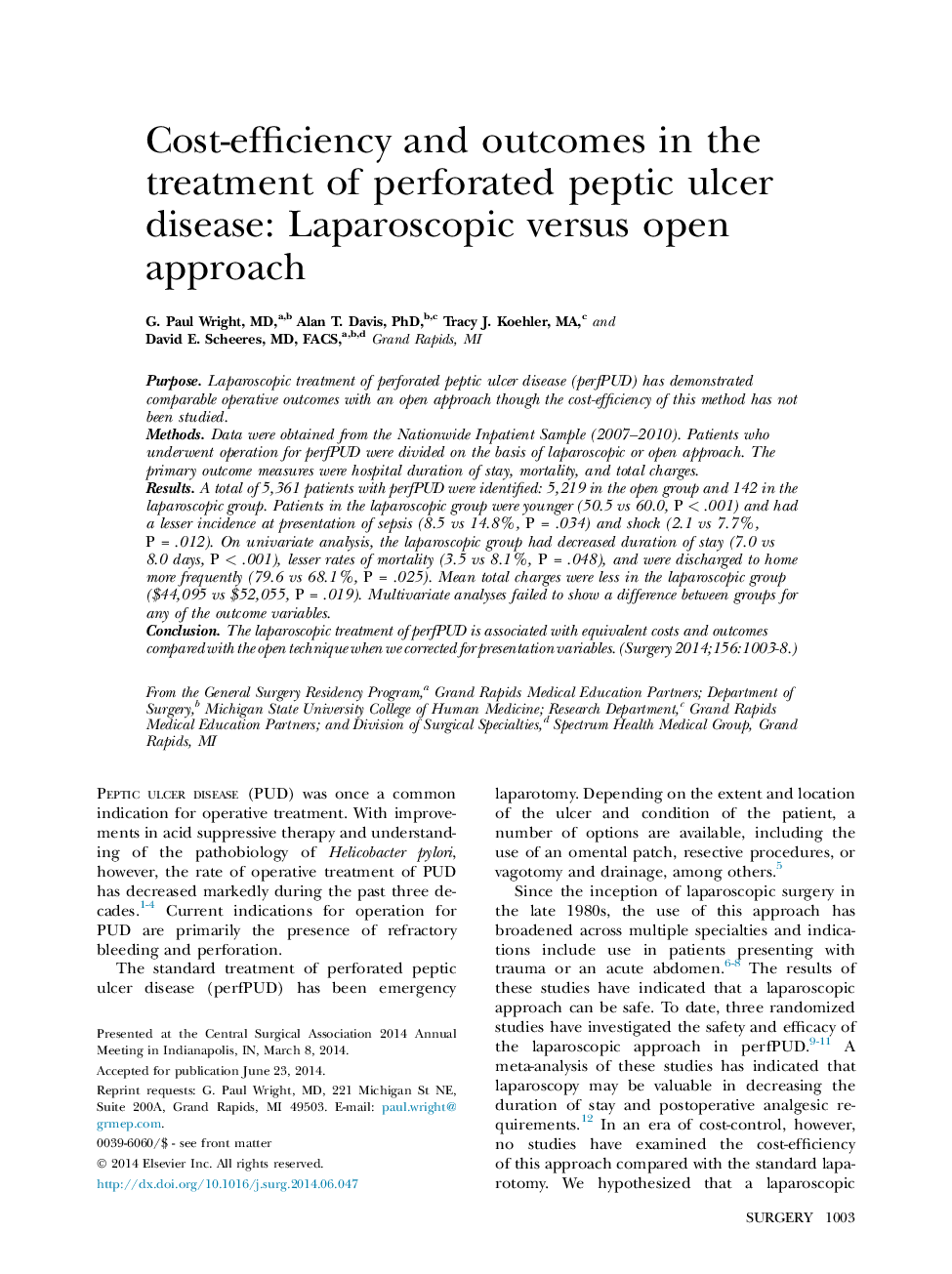| Article ID | Journal | Published Year | Pages | File Type |
|---|---|---|---|---|
| 4307663 | Surgery | 2014 | 6 Pages |
PurposeLaparoscopic treatment of perforated peptic ulcer disease (perfPUD) has demonstrated comparable operative outcomes with an open approach though the cost-efficiency of this method has not been studied.MethodsData were obtained from the Nationwide Inpatient Sample (2007–2010). Patients who underwent operation for perfPUD were divided on the basis of laparoscopic or open approach. The primary outcome measures were hospital duration of stay, mortality, and total charges.ResultsA total of 5,361 patients with perfPUD were identified: 5,219 in the open group and 142 in the laparoscopic group. Patients in the laparoscopic group were younger (50.5 vs 60.0, P < .001) and had a lesser incidence at presentation of sepsis (8.5 vs 14.8%, P = .034) and shock (2.1 vs 7.7%, P = .012). On univariate analysis, the laparoscopic group had decreased duration of stay (7.0 vs 8.0 days, P < .001), lesser rates of mortality (3.5 vs 8.1%, P = .048), and were discharged to home more frequently (79.6 vs 68.1%, P = .025). Mean total charges were less in the laparoscopic group ($44,095 vs $52,055, P = .019). Multivariate analyses failed to show a difference between groups for any of the outcome variables.ConclusionThe laparoscopic treatment of perfPUD is associated with equivalent costs and outcomes compared with the open technique when we corrected for presentation variables.
